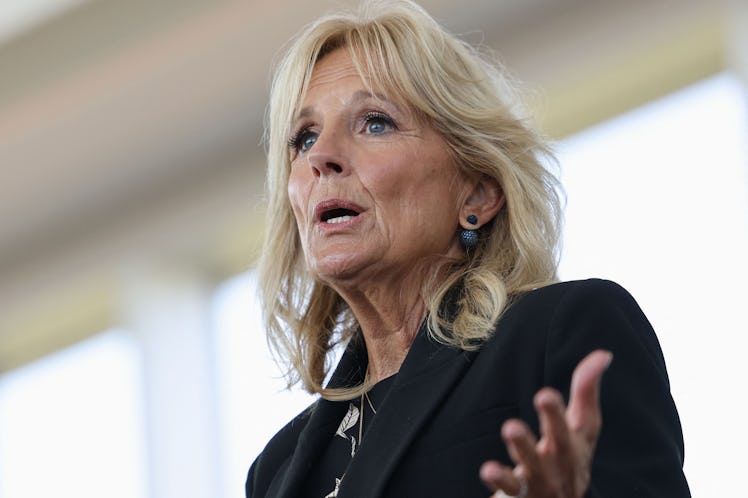
The First Lady Gig Is Actually A Lot Of Work
All the work, none of the perks.
Since the very first inauguration, there’s always been a position for the first lady by the president’s side. While the first lady’s role may not be an elected one, she still plays a critical role in keeping the gears turning in Washington — especially as her platform has evolved to become more political over the years. As the official hostess of the White House, and as a fierce advocate for the president, the first lady does a lot more than you may think.
Let’s take it all the way back to 1789, when Martha Washington became the United States’ founding first lady. Although her title wasn’t officially coined during her tenure, she was known at the time as “Lady Washington.” At that time, the first lady’s position was regarded as more of a ceremonial one than a political one, and the responsibilities mainly included organizing and hosting social functions for the nation’s political leaders. The role gradually became more formal as the decades passed. Now, in addition to having her own office in the East Wing, the first lady also has her own chief of staff, communications team, schedulers, and policy advisers. (All this, and she doesn’t even get a salary.)
As the first lady’s platform has grown over the years, so have her responsibilities. In 2021, she’s now regarded as the president’s teammate when it comes to political leadership, as she works as one of the commander-in-chief’s fiercest political advocates. In addition to appearing alongside him or acting as a surrogate during public events, she’ll also champion causes aligned to his political agenda. According to a 2017 analysis of the role of first ladies conducted by Rice University’s Baker Institute for Public Policy, presidents’ spouses “are among the most important political actors in the White House.” Due to their closeness and trust with a president, “these women have lobbied on behalf of specific projects, groups, and policies; participated in staffing decisions and controlled access to the president; and shaped the policy agenda.”
There are plenty of examples. For instance, Hillary Clinton spearheaded a task force on National Health Care Reform in 1993. Laura Bush championed literacy and supported President George W. Bush’s No Child Left Behind Act. Michelle Obama supported President Barack Obama’s American Recovery and Reinvestment Act of 2009 through visits to the Department of Housing and Urban Development and the Department of Education. Most recently, Jill Biden has led the way on four more years of tuition-free schooling in President Joe Biden’s American Families Plan.
In addition to the political platform, the first lady is also known for certain elements of soft diplomacy, including through the use of fashion. First ladies will often use sartorial choices to make a political point, wearing more affordable brands during economic downturns, or porting local designers on international trips. In June, Jill Biden sported a blazer that had the word “LOVE” bedazzled on the back during a trip to the U.K., and she was aware of the image she presented. “I think that we’re bringing love from America,” she told reporters at the time. Many saw it as a sharp contrast to former first lady Melania Trump’s infamous “I really don’t care, do u?” jacket, which she wore on a 2018 trip to visit migrant children.
So while first ladies are indeed very busy hosting events, managing political agendas, and advocating for the president, they still have time to use their platforms for progress. Or at least, for whatever point they want to make.